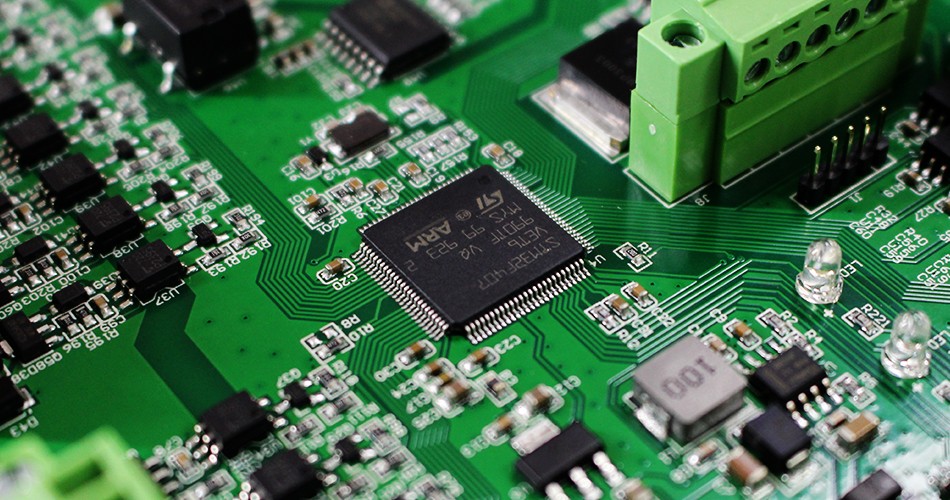- English
- Español
- Português
- русский
- Français
- 日本語
- Deutsch
- tiếng Việt
- Italiano
- Nederlands
- ภาษาไทย
- Polski
- 한국어
- Svenska
- magyar
- Malay
- বাংলা ভাষার
- Dansk
- Suomi
- हिन्दी
- Pilipino
- Türkçe
- Gaeilge
- العربية
- Indonesia
- Norsk
- تمل
- český
- ελληνικά
- український
- Javanese
- فارسی
- தமிழ்
- తెలుగు
- नेपाली
- Burmese
- български
- ລາວ
- Latine
- Қазақша
- Euskal
- Azərbaycan
- Slovenský jazyk
- Македонски
- Lietuvos
- Eesti Keel
- Română
- Slovenski
- मराठी
- Srpski језик
High-frequency circuits in PCBA processing
2024-09-27
High-frequency circuits in PCBA processing (Printed Circuit Board Assembly) refer to electronic circuits that work in a high-frequency range, such as radio frequency (RF) circuits, microwave circuits, etc. These circuits are essential for the performance and stability of electronic products. This article will discuss high-frequency circuits in PCBA processing in detail, including the characteristics of high-frequency circuits, design considerations, and processing techniques.

Characteristics of high-frequency circuits
1. Frequency range
The operating frequency of high-frequency circuits is usually in the range of MHz to GHz, and the particularity of high-frequency signal transmission and processing needs to be considered.
2. Signal transmission
High-frequency circuits have more stringent requirements for signal transmission, and need to consider issues such as impedance matching, transmission loss, and signal attenuation of transmission lines.
3. Electromagnetic interference
High-frequency circuits are more sensitive to electromagnetic interference, and effective shielding and suppression measures need to be taken to reduce the impact of external interference on the circuit.
Considerations for high-frequency circuit design
1. Impedance matching
In high-frequency circuits, impedance matching of transmission lines is very important. It is necessary to ensure impedance matching between signal sources, transmission lines, and loads to reduce signal reflection and loss.
2. Wiring and hierarchy
Reasonable wiring and hierarchy design can reduce the length and loss of signal transmission paths and improve the performance and stability of high-frequency circuits.
3. Shielding and suppression
For high-frequency circuits, effective shielding and suppression measures need to be taken, such as using shielding covers, adding ground wires, reducing reflow solder joints, etc., to reduce electromagnetic interference.
4. Heat dissipation and packaging
High-frequency circuits will generate higher temperatures when working, and heat dissipation and packaging design need to be considered to ensure that the operating temperature of circuit components is within a safe range.
High-frequency circuit processing technology
1. PCB material selection
Select PCB materials suitable for high-frequency circuits, such as PTFE (polytetrafluoroethylene) substrates, Rogers boards, etc., which have lower dielectric constants and losses, and are conducive to high-frequency signal transmission.
2. Process parameter control
During the PCBA processing process, strictly control process parameters such as temperature, humidity, soldering time, etc. to ensure the performance and stability of high-frequency circuits.
3. Wiring and soldering
During the wiring and soldering process, avoid sharp turns and angles to reduce the loss and attenuation of the signal transmission path.
4. Quality inspection
Strict quality inspection and testing of high-frequency circuits, including impedance matching test, signal transmission test, electromagnetic compatibility test, etc., to ensure the reliability and performance of the circuit.
Application fields of high-frequency circuits
1. Communication equipment
Such as wireless network equipment, satellite communication equipment, etc., require high-frequency circuits to process and transmit signals.
2. Radar and navigation systems
High-frequency circuits play an important role in radar systems and navigation systems, and are used for signal processing and control.
3. Medical equipment
Such as medical imaging equipment, life monitoring equipment, etc., require high-frequency circuits for signal processing and data transmission.
Conclusion
High-frequency circuits have an important position and role in PCBA processing, and have a direct impact on the performance and stability of electronic products. Through reasonable design considerations, the use of suitable processing technology and materials, the performance and reliability of high-frequency circuits can be ensured, the needs of different fields can be met, and the competitiveness and market share of electronic products can be improved.
-
Delivery Service






-
Payment Options









